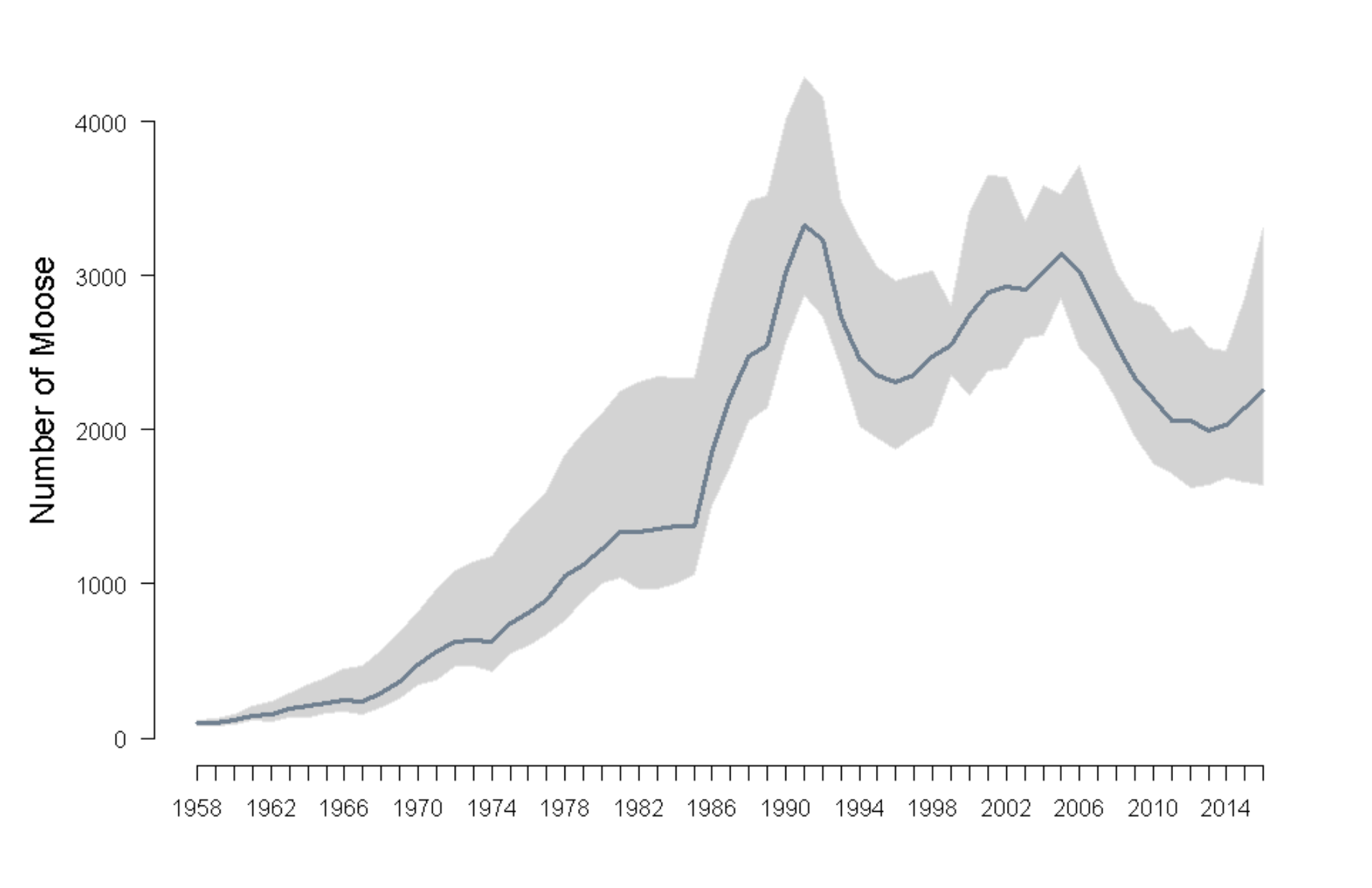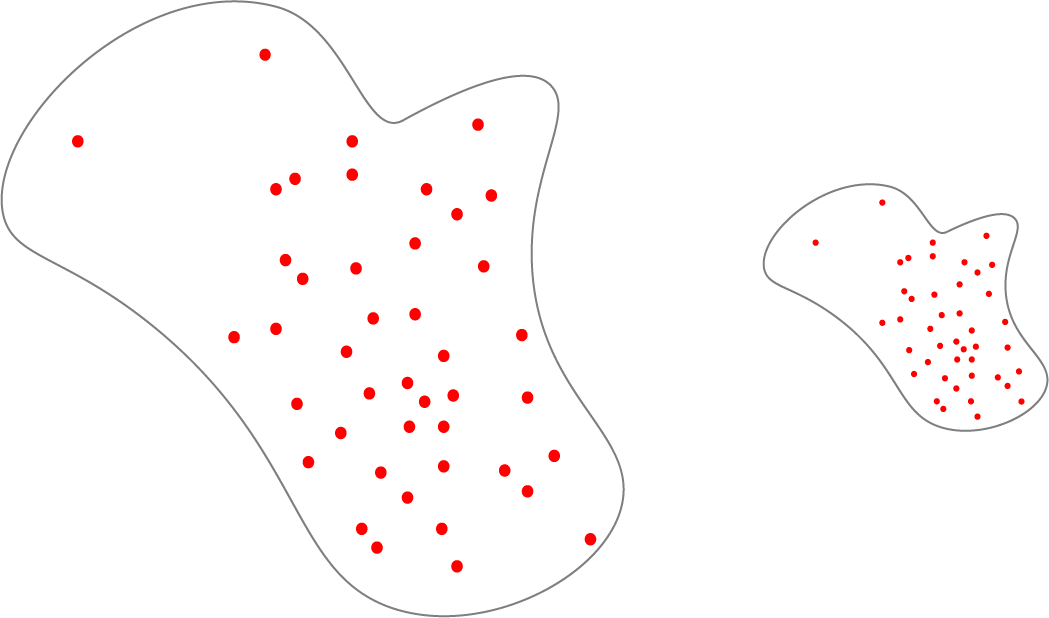class: center, middle, inverse, title-slide # Lecture 1 ## Introduction to population ecology ### <br/><br/><br/>WILD3810 (Spring 2021) --- ## Readings > Mills 3-12 > Powell & Gale 6-10 --- class: inverse, center, middle # What is population ecology? --- class: center, middle Population ecology is the study of the distribution of individuals in a population over time and space --- <img src="biological_organization.png" width="275" style="display: block; margin: auto;" /> --- <img src="biological_organization2.png" width="275" style="display: block; margin: auto;" /> --- ### Population ecology forms the basis for modern natural resource management - Conservation <img src="https://upload.wikimedia.org/wikipedia/commons/1/17/Gymnogyps_californianus_-Bitter_Creek_National_Wildlife_Refuge%2C_California%2C_USA_-flying-8.jpg" width="300" style="display: block; margin: auto;" /> ??? Image: Pacific Southwest Region U.S. Fish and Wildlife Service from Sacramento, US [CC BY 2.0 (https://creativecommons.org/licenses/by/2.0) or Public domain], via Wikimedia Commons --- ### Population ecology forms the basis for modern natural resource management - Conservation - Management <img src="https://upload.wikimedia.org/wikipedia/commons/b/ba/2012-mule-deer-female.jpg" width="400" style="display: block; margin: auto;" /> ??? Image: Yathin S Krishnappa [CC BY-SA 3.0 (https://creativecommons.org/licenses/by-sa/3.0)], from Wikimedia Commons --- ### Population ecology forms the basis for modern natural resource management - Conservation - Management - Population control <img src="https://upload.wikimedia.org/wikipedia/commons/2/21/Phragmites6170.JPG" width="400" style="display: block; margin: auto;" /> ??? Image: Le.Loup.Gris [GFDL 1.3 (www.gnu.org/licenses/fdl-1.3.html) or CC BY-SA 3.0 (https://creativecommons.org/licenses/by-sa/3.0)], from Wikimedia Commons --- class: inverse, center, middle # Definitions --- class: inverse ## Population > A group of organisms of the same species occupying a particular space at a particular time --- ## Interactions A common concept in all definitions of a population is some potential for *interactions* among individuals -- - interactions can be direct (fighting for territories, reproducing) or indirect (food depletion) -- - some definitions refer to reproduction - what about non-reproductive periods of the life cycle? --- class: inverse ## Abundance (population size) > the number of individual organisms in a population at a particular time --- ## Abundance (population size) > the number of individual organisms in a population at a particular time `\(^1\)`  ??? Image: [https://wildlife.utah.gov/hunting/biggame/pdf/moose_plan.pdf](https://wildlife.utah.gov/hunting/biggame/pdf/moose_plan.pdf) `\(^1\)` How is the "population" defined in this example? Does that make sense biologically? From a management perspective? --- class: inverse ## Density > the number of individuals relative to a critical resources (i.e., space) --- ## Density > the number of individuals relative to a critical resources (i.e., space)  --- ## Density > the number of individuals relative to a critical resources (i.e., space) `\(^2\)` <img src="https://upload.wikimedia.org/wikipedia/commons/4/42/Western_Bluebird_leaving_nest_box.jpg" width="400" style="display: block; margin: auto;" /> ??? `\(^2\)` Density doesn't always have to be relative to space. It could relative any limiting resource (e.g., nesting sites) Image: Kevin Cole from Pacific Coast, USA (en:User:Kevinlcole) [CC BY 2.0 (https://creativecommons.org/licenses/by/2.0)], via Wikimedia Commons --- class: inverse, center, middle ## Why are you interested in population ecology? --- ## Questions that population ecologists ask: -- + *Why is this species found here and not there?* -- + *Are there more of this species than there used to be? Why?* -- + *How many individuals of this species can be harvested each year?* -- + *Will climate change cause this species to increase or decrease?* --- ## Models of populations Answering these questions **requires** models <br/> <br/> -- Models link **observations** to **processes** <br/> <br/> -- Models are tools that allow us to learn about the real world <br/> -- - By necessity, models are simplifications of reality --- class: inverse, center, middle ## By the end of the course, you will be a modeler! --- class: inverse, center, middle ## The modeling process `\(^3\)` ??? `\(^3\)` For more information, refer to Powell & Gale pgs 7-9 --- ## The modeling process 1) Define the problem -- - How many individuals will be in our population next year? --- ## The modeling process 1) Define the problem 2) Identify the important variables -- - population size this year `\((N_t)^4\)` ??? `\(^4\)` `\(t\)` subscript refers to `time` and can be integer values `\((1,2,3...)\)` that correspond to days, weeks, years, etc. -- - number of births `\((B_t)\)` -- - number of deaths `\((D_t)\)` -- - number of immigrants `\((I_t)\)` -- - number of emigrants `\((E_t)\)` --- ## The modeling process 1) Define the problem 2) Identify the important variables 3) Create the model `$$N_{t+1} = N_t + B_t + I_t - D_t - E_t$$` --- ## The modeling process 1) Define the problem 2) Identify the important variables 3) Create the model 4) Solve the model -- - Count the individuals! -- - Estimate birth/death rate -- - Measure movement --- ## The modeling process 1) Define the problem 2) Identify the important variables 3) Create the model 4) Solve the model 5) Interpret the results -- - Do the results make sense? `\(^5\)` ??? `\(^5\)` Checking whether the results make sense is a complex process that involves not just checking whether the results are consistent with your knowledge of the system but also more formal approaches like goodness-of-fit testing, sensitivity analysis, and model selection. We will discuss these more in lab as we work through some more specific models and questions --- class: inverse, middle, center # Abundance --- ## Abundance Each definition of a population refers to it being a collection of individuals <br/> -- We denote the total number of individuals in a population as `\(N\)` <br/> -- `\(N\)` is the **State Variable** of a population <img src="Screenshot_2018-12-11 Utah Moose Statewide Management Plan - moose_plan pdf.png" width="400" style="display: block; margin: auto;" />